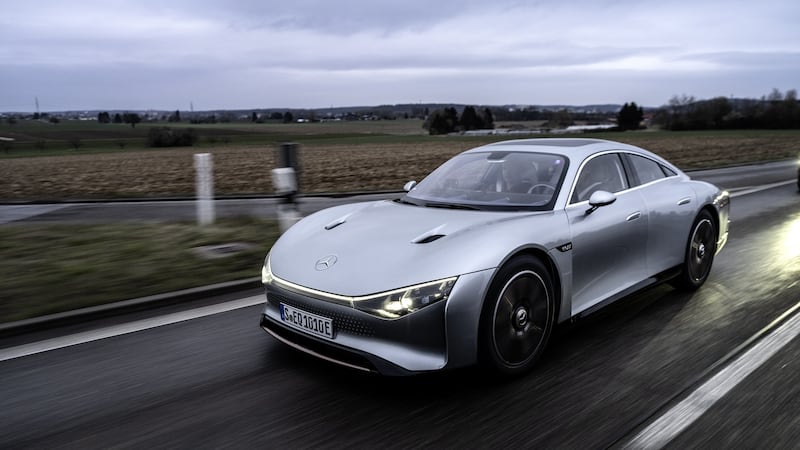Mercedes may not have been at the vanguard of the electric revolution, but it has overtaken many rivals lately with a fleet of new electric models. The German car giant’s new all-electric EQ sub-brand now has six fully electric models on the market, with two more joining the fray by the start of next year.
It heralds a revolution at the German car giant that not only sees it embrace electric, adopt a more online-orientated sales approach and increasingly focus on connectivity services. Ultimately it signals a shift in the company’s position on the market. Forget the increasingly bloody battle for premium volume sales: Mercedes in the future will be a luxury brand.
For many it has always been that, but at the start of the century it got into volume tussles with rivals at BMW and Audi, increasing market share with smaller - but lower profit margin - models aiming to increase sales numbers. Now, in what some might see as an about shift, Mercedes is planning a return to its previous strategy, focussing on the top end of the market.
In line with this strategic overhaul is a set of targets to meet the changing face of the auto world.
By 2030 Mercedes entire range will be fully electric, a timely target for its Irish distributor, given the Government’s previously stated ambitions to ban the sale of new cars powered with combustion engines from that year.
Ending range anxiety
Mercedes is off to a strong start, with eight EVs on the Irish market for the start of 2023. Last month, its EQXX concept car completed a 1,008km drive from Sindelfingen in Germany to Cassis in France on a single charge. At the end of the 12-hour trip the car's battery pack still had 15 per cent of its charge left.


This was not just a one-off experiment: Mercedes plan to bring this car to market in 2024, sounding the death knell for range anxiety. Already its new EQS luxury saloon, launched in Ireland this month, claims a realistic range of over 700km on a single charge.
The EQS - an electric equivalent of the S-Class - is joined by the EQE, which is similar in size to an E-Class. They join the EQA, EQB, EQC and EQV currently on the market. You can probably crack the naming convention by now. Early next year will come SUV versions of the EQS and EQE.
Mercedes’ commitment to be fully electric by the end of the decade is just one of a series of revolutions underway at the brand, which plans to be completely carbon neutral by 2039. These will impact everything from the suppliers of parts to the way you buy your Merc. And everything in between.
If there was any question about whether these were yet more car industry conceits, the Germans are putting their money where their mouth is, investing €60 billion in the plans over the next four years. In passenger car development alone, they are spending €7 billion a year on R&D: that’s over €19 million a day.
The goals of being carbon neutral across the supply chain, through production and right to your driveway involves dozens of incremental elements. The goal is to hit the target by 2039.
Dealerships
In the interim, the way we buy our cars will have radically changed. Think Apple store rather than dealer forecourt. According to Ciaran Allen, sales manager for Mercedes-Benz passenger cars in Ireland, in the past the average car buyer would visit seven showrooms before a purchase; now that average is 1.4, reflecting the move online.
In this new era, it is likely that car makers will need fewer dealerships as showrooms give way to handover centres, while the dealership staff will need to include a lot more product experts rather than simply sales personnel. Meanwhile consumers will find more electronic features offered on subscription models, with buyers of the new EQS expected to be spending anywhere from €300 or more on annual fees for an increasing variety of connectivity services.
Amid the major strategic overhaul and massive investments underway at Mercedes, set against a global backdrop of rising raw material prices and chip shortages, one thing is becoming clear: the chances of getting your hands on a cheap Merc in the future are starting to dwindle.












